Canning Recipe for Homemade Tomato Sauce
Learn how to make and preserve homemade tomato sauce in a water bath canner or pressure canner.
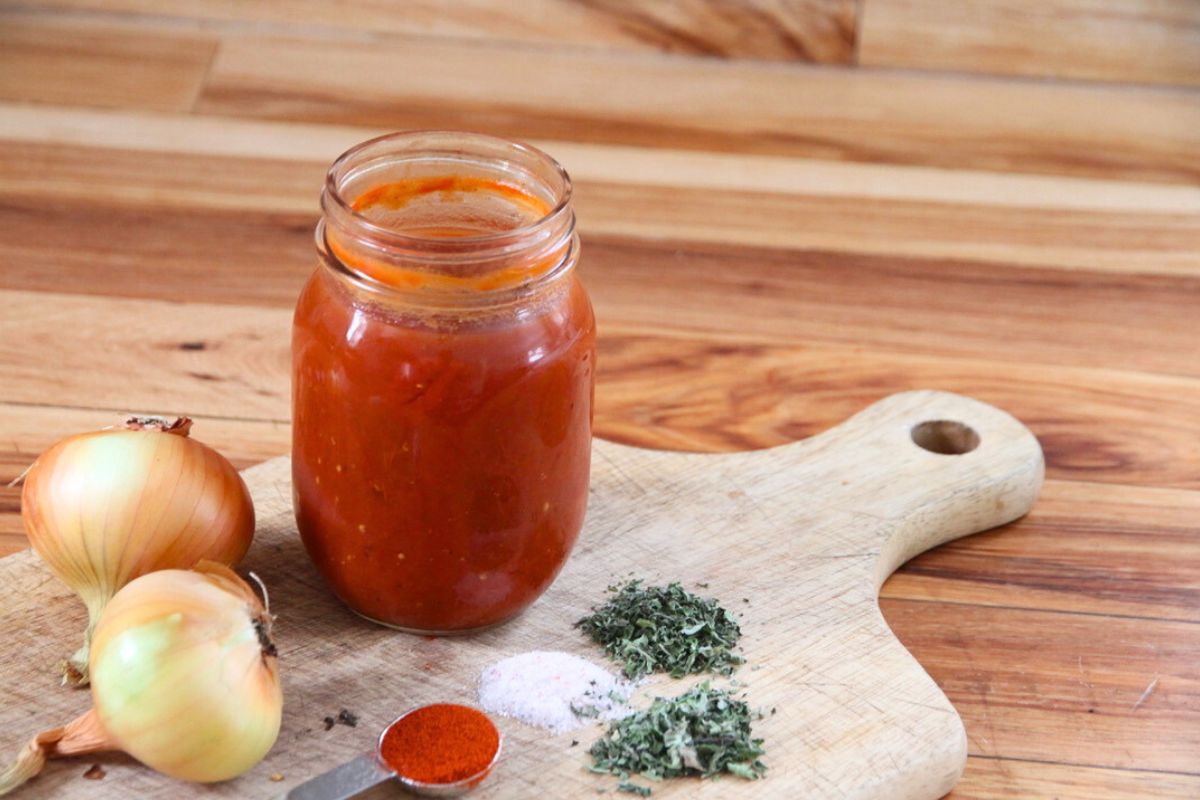
There are several food preserving methods you can use to put up homemade tomato sauce. In my kitchen, I like canning the best.
This doesn't mean I don't ever make use of my freezers. In fact, I often freeze whole tomatoes until I'm ready to make sauce! And sometimes, I do make freezer tomato sauce.
But I really, really like the convenience of having canned sauce on hand.
It's ready to go any time I need it.
Pop open a jar and I have instant tomato sauce for pasta, homemade pizza, soups or any other recipe that calls for sauce!
I like canning tomato sauce. But I haven't yet decided if I like pressure canning tomato sauce best, or if I like water bath canning it.
Actually, now that I think about it? The canning method I use is dependent on how my day is going.
Pressure canners need babysitting. Water bath canners don't.
When I have time to fuss, I pressure can. If I need my hands (and mind) to be free, I water bath can.
So in this tutorial, I'm going to share both pressure canning and water bath canning methods with you. Because when it comes to tomatoes, it's worth knowing how to do both!
Best Tomatoes to Use for Homemade Tomato Sauce
Paste, plum and roma tomato varieties are the best for homemade sauce.
They have very few seeds, thick flesh and low water content. This means you get more sauce per pound of fruit than you would with a juicy, fresh eating tomato.
Here are some great options I've tried in the past:
- Amish Paste Tomatoes
- Oplaka (my current favorite!)
- Roma tomatoes
- San Marzano
If you want amazing homemade sauce, I highly recommend growing your own tomatoes or buying from locals in season.
Fresh garden tomatoes have a flavor that can't be beat, especially when you use them for home-canned tomato sauce!

Water bath can or pressure can your tomato sauce?
Tomato sauce is safe for both, as I shared above. The techniques and processing times used for each type of canner will vary, so be sure to follow the right set of directions!
Remove tomato skins before or after saucing?
Did you ever watch your mom or grandma can tomatoes?
If so, you probably saw them put whole tomatoes through the blanching process by dipping them into boiling water, then dumping fruits in cold water to chill. After this, they could easily remove the peels by hand.
It is a good idea to peel tomatoes if you are canning them whole, in halves or chunks. But the process is very tedious, and completely unnecessary when you're making sauce!
Instead, I recommend leaving the peels on while you cook the fruits to a mush. From there, you can use a food mill to catch the skins, or puree them into oblivion with a strong kitchen blender.
Is it a good idea to add salt to tomato sauce before canning?
Adding salt will give your sauce better flavor in the end. When canning tomatoes at home, measure salt directly into the jar.
- Pint jars: 1/2 teaspoon of salt per jar
- Quart jars: 1 teaspoon of salt per jar
Do I have to add acid to my tomato sauce?
Yes, you do. Tomatoes used to be a high-acid food. But over the past century or so, tomato breeders have focused on producing sweeter fruit. The result was a tomato with lower acid.
Now, our modern tomatoes certainly aren't a low-acid food! But they often fail to hit the 4.6 acidity level on the pH scale.
So all safe tomato canning recipes call for an addition of acid, just to be sure you won't have an issues with botulism (a toxic bacteria that grows in an anaerobic environment).
According to the National Center for Home Food Preservation the following options will give you the acidity that is needed (I list exact amounts in the printable recipe card below).
- Bottled lemon juice (acidity levels vary with fresh lemon juice, so stick to bottled stuff)
- 5% white vinegar
- Citric acid
Is it necessary to add acid to pressure canned tomatoes?
You might be wondering if pressure canned tomato sauce still needs added acidity?
The answer is yes.
The National Center for Home Food Preservation makes it very clear that tomato sauce still needs additional acid to be safe for pressure canning.
Processing times are partially based on the acid levels, so you do need to pay attention!
Now, let's dive into making and canning tomato sauce!
Tools You'll Need
- A large stockpot
- Large spoon
- Kitchen blender or food mill
- Six pint (500 ml) jars
- Six canning lids and bands
- Ladle
- Funnel
- Jar lifter
- Water bath canner or pressure canner
Ingredients
- 10 pounds of tomatoes (4.5 kg)
- 2 1/2 C chopped onions
- 1 1/2 teaspoon dry oregano
- 1 teaspoon salt
- 6 tablespoons of lemon juice (1 for each pint jar of sauce)
Note: it is safe to double this recipe, if you want 6 quart jars instead.
How to Make Homemade Tomato Sauce
It's easy to make your own tomato sauce at home. You can use fresh tomatoes, or even whole frozen tomatoes (I show you how to make tomato sauce with frozen tomatoes here).
Either way, the process is nearly the same.
Wash tomatoes before making sauce if they have any signs of dirt, then weigh your tomatoes (fresh or frozen).
Place tomatoes in a large pot for cooking.

For fresh tomatoes: slice your tomatoes in half or squeeze to break the skin before putting them into your large stock pot. This will quickly release juice, so you don't have to worry about tomatoes burning on the stove top!
For frozen tomatoes: you can toss whole frozen tomatoes directly into your stockpot; they will quickly release liquid as they thaw and there's no danger of burning.
Cook your tomatoes until they are soft and mushy, being sure to stir on occasion.
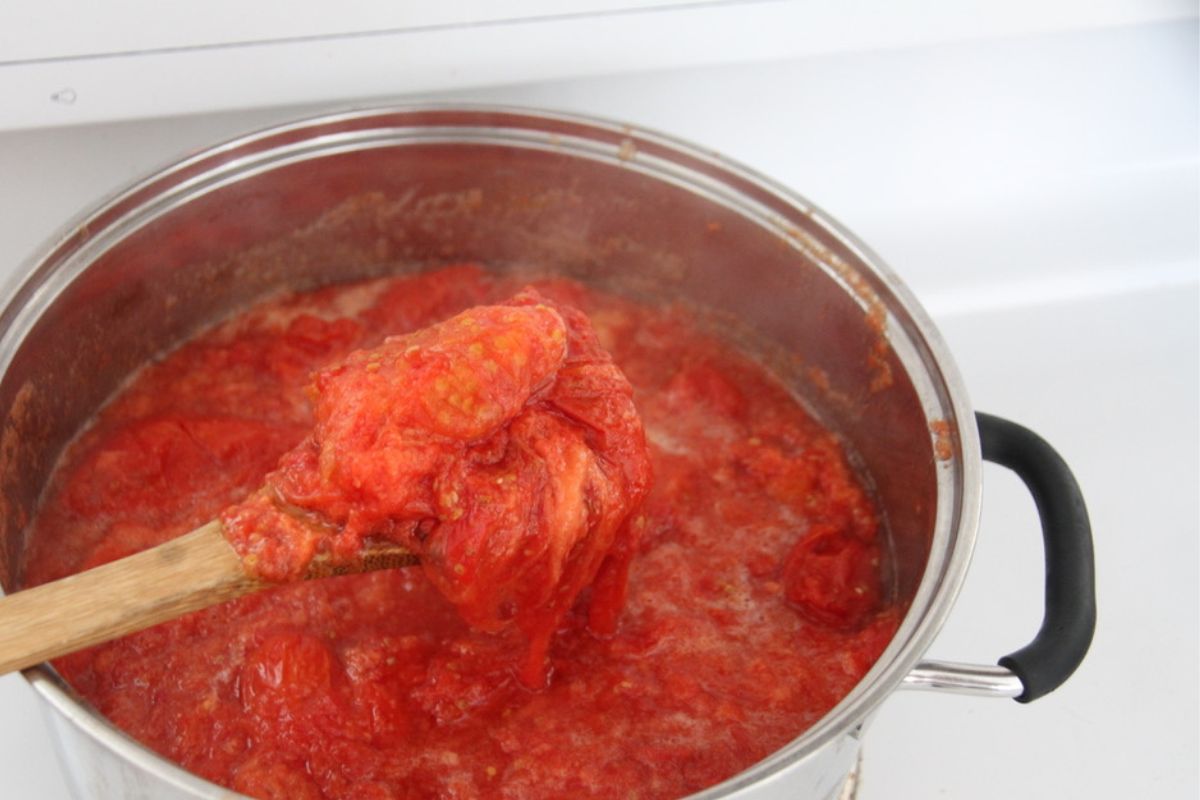
Dice your onion and add it to the tomatoes, along with any other herbs or spices.
Cook the tomatoes for an additional 10 minutes to soften the onion and infuse flavors
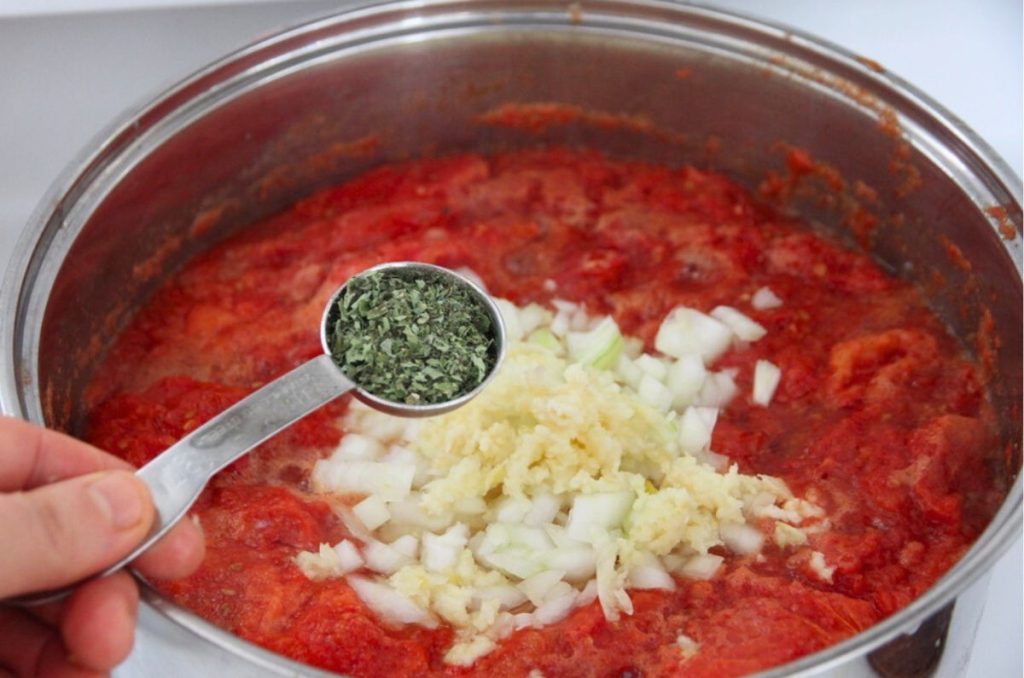
Remove your pot from the heat, and let the tomatoes cool until they are safe to handle.
Then you can run the fruit through a food mill (if you have one) or a blender.
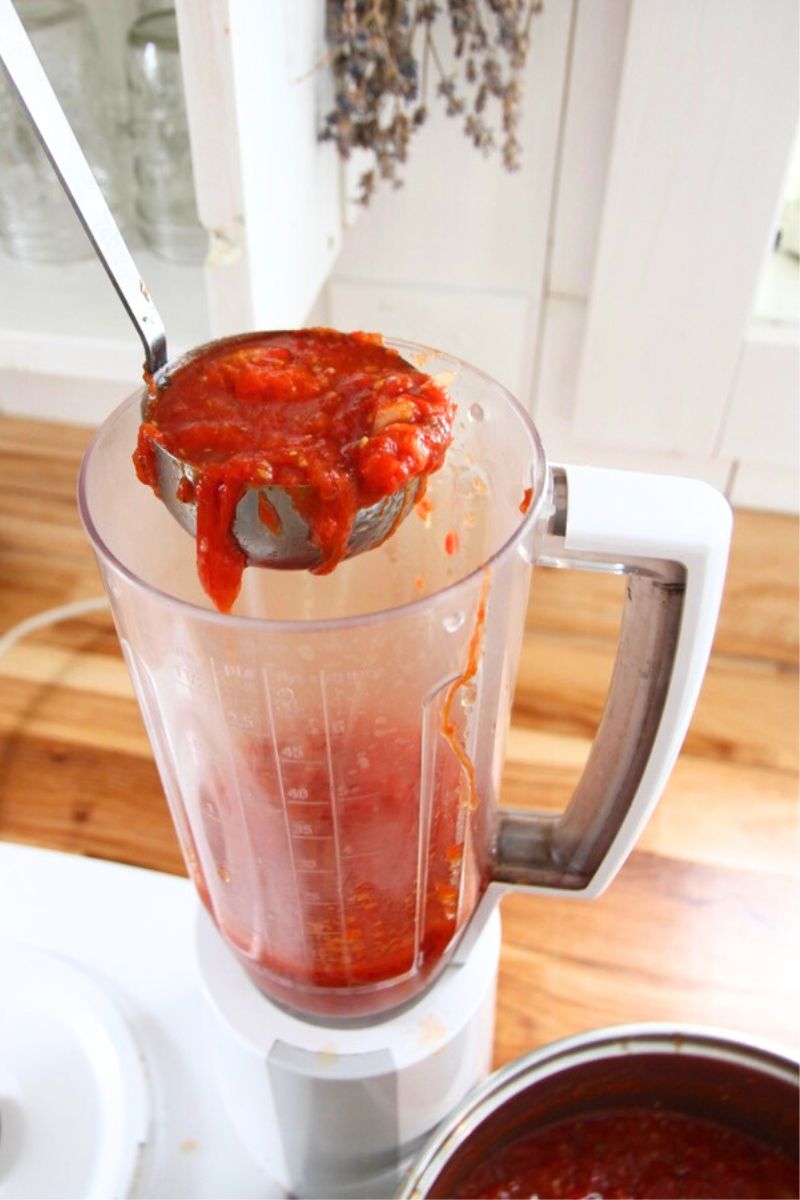
I prefer the blender method, but you do need one with some power for this project. Otherwise the peels might not disappear.
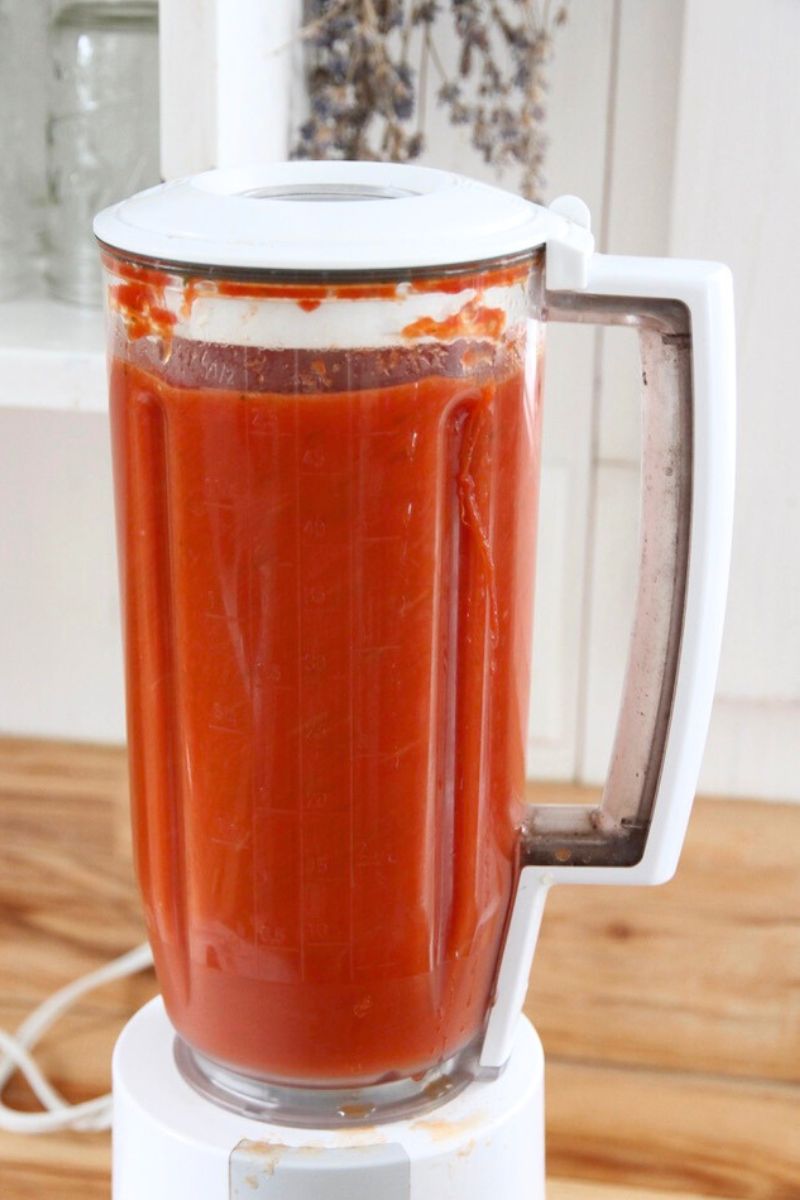
Puree the tomatoes for 30-40 seconds, or until you no longer see peels whirling by.
When everything is pureed, I like to pour the sauce into a large stainless steel bowl. And when I've finished working through all the cooked tomatoes, I return the thin sauce to the stockpot.
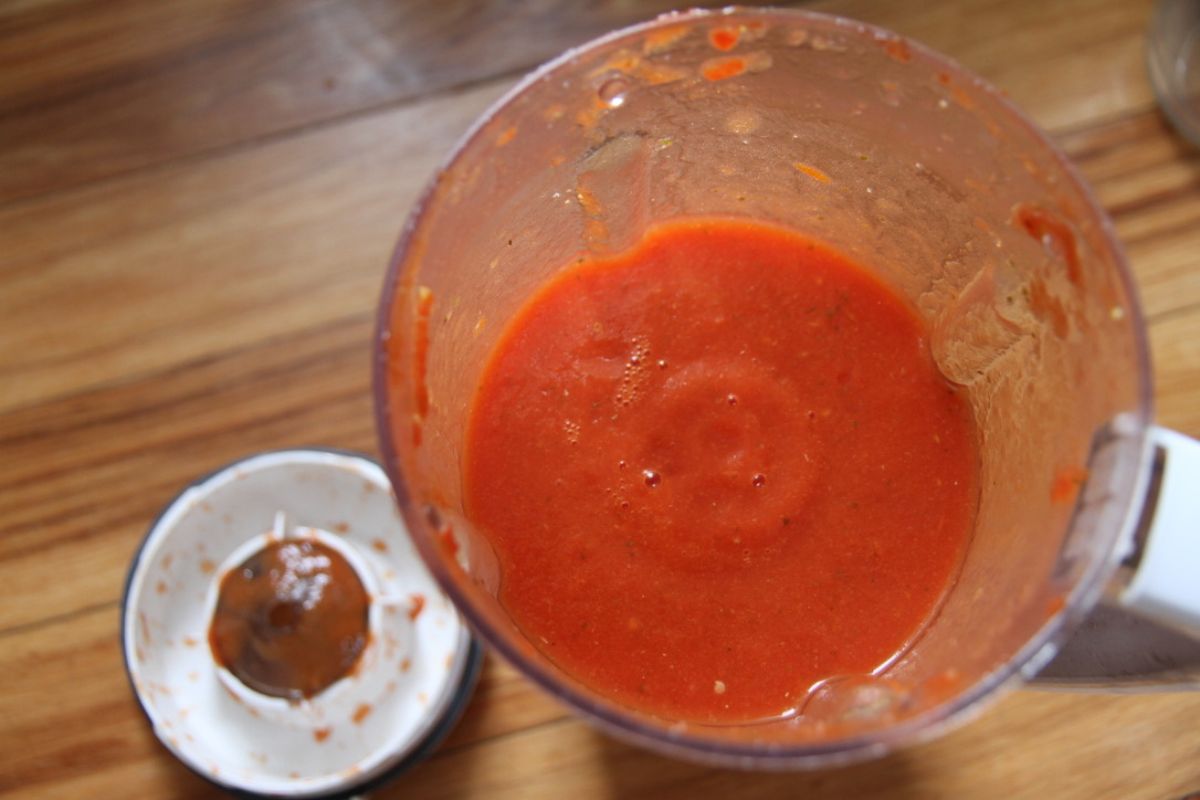
If you want thicker sauce, go ahead and cook the tomato puree on your stove to evaporate more water.
When you're happy with the consistency, preserve the sauce in a water bath canner (aka canning pot) or pressure canner.
Helpful tip: you can speed things up by working in batches. Make all your sauce in one day and store it in the fridge or freezer. When you're ready to start canning, reheat the sauce and preserve it all in a day, or do batches whenever you have free time.
Canning Tomato Sauce
Unlike a lot of produce, tomatoes are safe for both pressure canning and water bath canning.
With tomato sauce, you can preserve it in pint jars or quart size jars. Do whatever serves your family best (and makes your life easier).
Prepare Your Canner, Jars & Sauce
Add water to your canner, and let it start warming on the stove.
Tomato sauce should always be heated before ladling it into jars, so bring it to a bubbling simmer on the stove. Stir it often with a protected hand, so you can avoid hot splatters.
Wash your canning jars with hot, soapy water. Go ahead and refill them with fresh, hot water and leave them to pre-warm in the kitchen sink. They can sit there until you're ready to fill them!
When everything on the stove is hot, take your pre-heated jars and dump the water out of each one.
Measure your lemon juice (or whatever you're using for acidification) and salt, dumping both into the bottom of each jar.
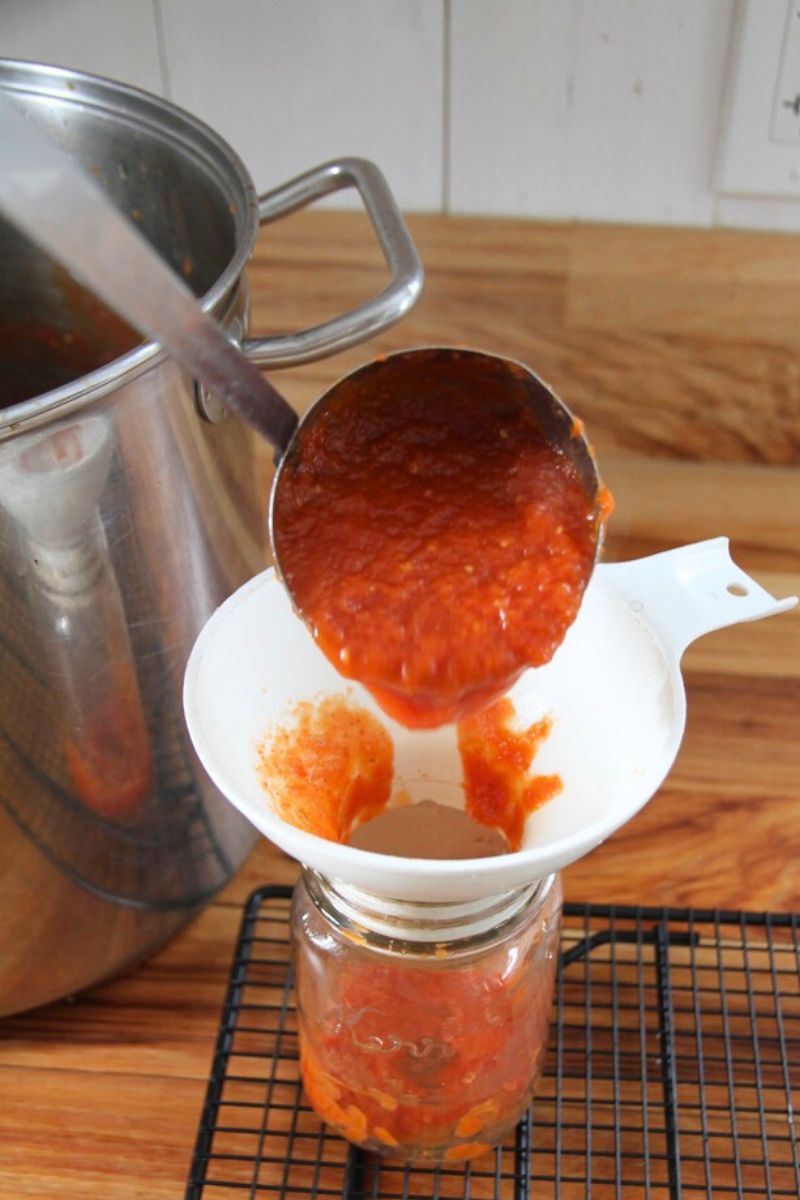
Use a funnel and ladle to fill warm jars with hot tomato sauce. Be sure to leave about 1/2 inch of headspace (open space) at the top of each jar.
Wipe the jar's rim before adding a clean canning lid, then tighten the lid down with a canning band.
Place your jars on the canning rack in the bottom of your canner. When the canner is full, follow the directions below for your canner type!
Water Bath Canning Instructions
- When all your jars of sauce are in the water bath canner, make sure they are covered by 1 inch of water, and put the lid in place.
- Bring the water to a full boil and start your timer, processing according to your altitude and jar size (see instructions below and also printable recipe card).
- When the processing time is complete, use a jar lifter to place jars on a cooling rack.
- Leave undisturbed for 12 hours or until the sauce reaches room temperature.
- Check for a seal on each jar, placing sealed jars on the pantry shelf and unsealed jars...well! They can be refrigerated, or added into another batch of homemade tomato sauce simmering on the stove!

Processing Times
Pints
- 0-1,000 ft: 35 min
- 1,001-3,000 ft: 40 min
- 3,001-6,000 ft: 45 min
Quarts
- 0-1,000 ft: 40 min
- 1,001-3,000 ft: 45 min
- 3,001-6,000 ft: 50

Pressure Canning Instructions
- When your pressure canner is filled with jars of sauce, securely fasten the lid in place.
- Make sure the lid's vent is open, and turn the heat to high.
- Once you have a steady stream of steam escaping from the vent, set a timer for 10 minutes.
- Vent for 10 minutes, then close the valve.
- For weighted gauge canner: add the proper weight to the valve, according to your altitude.
- Dial gauge canner: add a weight or close the valve (dependent on your type of dial canner).
- Bring the pressure up to the proper poundage for your altitude.
- Remember: with a dial gauge canner, you use the dial to measure pressure, but with a weighted gauge canner, you go by how many times the weight jiggles in a minute's time!
- Process according to your canner type, jar size and altitude.
- Turn the stove burner off and leave the canner undisturbed, until the pressure reads 0 on your dial (do this for both dial and weighted pressure canners!)
- Slide on a pair of oven mitts, and carefully open the vent or remove the weight to release the last bit of steam.
- Open the hot lid, set it aside and use a jar lifter to place hot jars on a cooling rack.
- Let jars sit undisturbed for 12 hours (a pint jar will cool much faster than a quart jar).
- Check your jars for a seal, and place sealed jars in the pantry. Unsealed jars can be refrigerated, used in 7-10 days or the sauce can added to the next batch of tomato sauce you preserve!

Processing Times
Dial Gauge Pressure Canner
Pints: 15 min
- 0-2,000 ft: 6 pounds pressure
- 2,001-4,000 ft: 7 pounds pressure
Quarts: 15 minutes
- 0-2,000 ft: 11 pounds pressure
- 2,001-4,000 ft: 12 pounds pressure
Weighted Gauge Pressure Canner
Pints: 15 minutes
- 0-1,000 ft: 5 pounds pressure
- beyond 1,001 ft: 10 pounds pressure
Quarts: 15 minutes
- 0-1,000 ft: 10 pounds pressure
- beyond 1,001 ft: 15 pounds pressure

Tomatoes are very versatile, both in how you can preserve the fruits, and how you can use them in the kitchen!
Other Tomato Preserving Articles
Easy Way to Freeze Whole Tomatoes
How to Make Homemade Tomato Sauce with Frozen Tomatoes
Dehydrated Tomato Powder Recipe
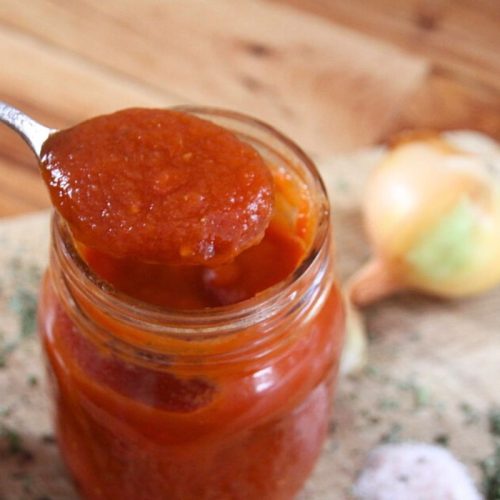
How to Can Homemade Tomato Sauce
Equipment
- a large stockpot
- large spoon
- kitchen blender or food mill
- 6 pint jars
- 6 canning lids or bands
- a ladle
- a jar funnel
- a jar lifter
- water bath canner or pressure canner
Ingredients
- 10 pounds of tomatoes 4.5 kg
- 2 1/2 C chopped onions
- 1 1/2 teaspoon dry oregano
- 1 teaspoon salt
- 6 tablespoons of lemon juice 1 for each pint jar of sauce
Instructions
How to Make Tomato Sauce
- Wash your tomatoes (if needed) and weigh the fruit, placing it in a large pot.
- Fresh Tomatoes: slice the fruit in half or squeeze to break skin and quickly release juices.
- Frozen Tomatoes: toss whole frozen tomatoes directly into your stock pot; they won't burn on account of the liquids they immediately release.
- Cook tomatoes for 20 minutes or until mushy throughout.
- Add onions, herbs and spices, cooking for another 10 minutes.
- Let tomatoes cool until they're safe to handle.
- You can use a food mill or a strong kitchen blender to make sauce.
- If you want thicker sauce, cook the tomatoes down again until you're happy with the consistency.
- Preserve hot tomato sauce in a pressure canner or boiling water bath canner.
Jar Filing Instructions
- Pr-warm jars by running hot water into them.
- Measure salt and acidifying substance into your jar, according to jar size.
- Use a funnel and ladle to fill your canning jars with hot tomato sauce, leaving 1/2 inch of headspace (open space) at the top.
- Wipe the rim of your jar and add a canning lid and band, tightening to fingertip tightness.
- Set each filled jar in the canner, until it's full.
- Process according to your altitude, jar size and canner type.
Water Bath Canning Instructions
- After filling your canner, add a lid, and turn stove heat to high.
- When the water boils, start your timer and process according to jar size and altitude.
- Pint Jars0-1,000 ft in altitude: 35 min1,001-3,000 ft: 40 min3,001-6,000 ft: 45 min
- Quart Jars: 0-1,000 ft in altitude: 40 min1,001-3,000 ft: 45 min3,001-6,000: 50 min
- Lift hot jars onto a cooling rack and let them sit for 12 hours. Test each one for a seal and refrigerate any that didn't take. Sealed jars are shelf stable and can be stored in your pantry.
Instructions for Preparing the Pressure Canner (Dial or Weighted)
- Fill and seal your jars with tomato sauce according to directions given above.
- Fill canner with lidded jars of sauce and seal the lid, making sure the vent is open.
- Turn heat to high and let things warm until a steady stream of steam is escaping from the vent.
- Set your timer for 10 minutes, and allow all air to be forced out of the canner.
- Close the vent (or add a weight) and let pressure build to the proper PSI for your altitude and canner type (dial gauge or weighted gauge).
The Dial Gauge Pressure Canner
- Pint Jars: 15 min0-2,000 ft elevation: 6 pounds pressure. 2,001-4,000 ft: 7 pounds pressure4,001-6,000: 8 pounds pressure
- Quart Jars: 15 min0-2,000 ft: 11 pounds pressure 2,001-4,000: 12 pounds pressure4,001-6,000: 13 pounds pressure
The Weighted Gauge Pressure Canner
- Pint Jars: 15 min0-1,000 ft elevation: 5 pounds pressure. Over 1,001 ft: 10 pounds pressure
- Quart Jars: 15 min0-1,000 ft: 10 pounds pressure Over 1,001: 15 pounds pressure
- When the right poundage has been reached for your canner type, set the timer (hint: it's 15 minutes for ALL jar sizes!).
- Process the jars, adjusting heat as needed.
- When jars have been processed for the proper time, turn the oven burner off and let your canner sit undisturbed, until pounds of pressure return to 0 on the canner's dial.
- Carefully open the vent (or lift the weight, if had), remove the lid and lift hot jars to a cooling rack.
- Let hot jars cool for 12 hours before testing for a seal.
- Sealed jars are shelf stable and can be stored in your pantry. Jars that didn't seal should be refrigerated and used in 7-10 days.
Notes
- Pint jar: 1 Tablespoon
- Quart jar: 2 Tablespoons
- Pint jar: 2 Tablespoons
- Quart jar: 4 Tablespoons
- Pint jar: 1/4 teaspoon
- Quart jar: 1/2 teaspoon
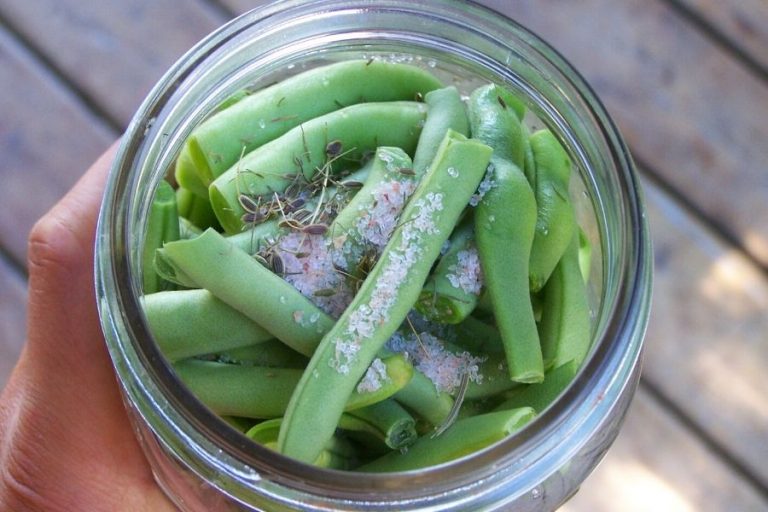
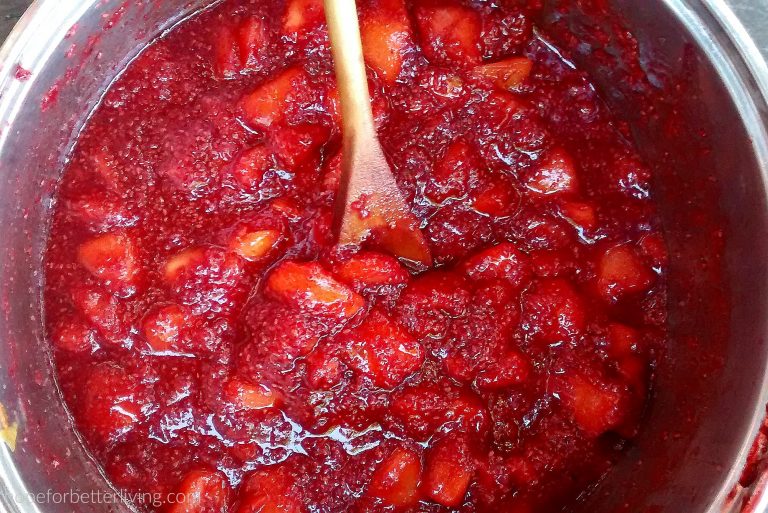
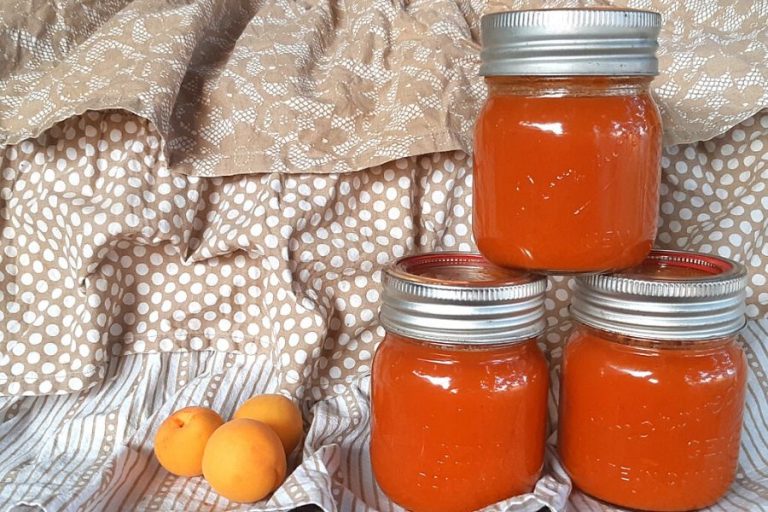
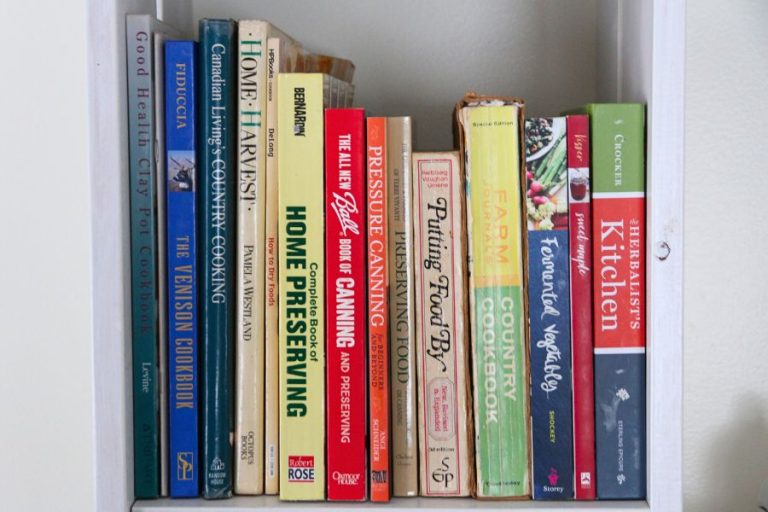
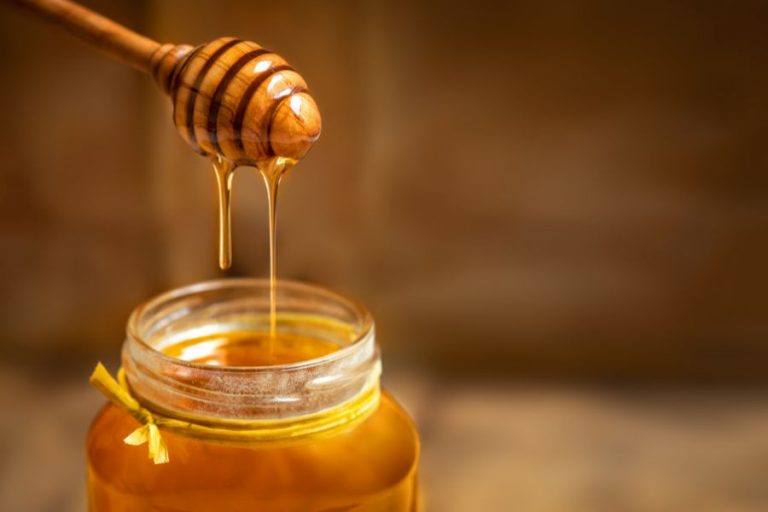

I assume you can add whatever other spice you want, like basil, right,?
Absolutely. We love oregano, garlic and onions around here! 🙂